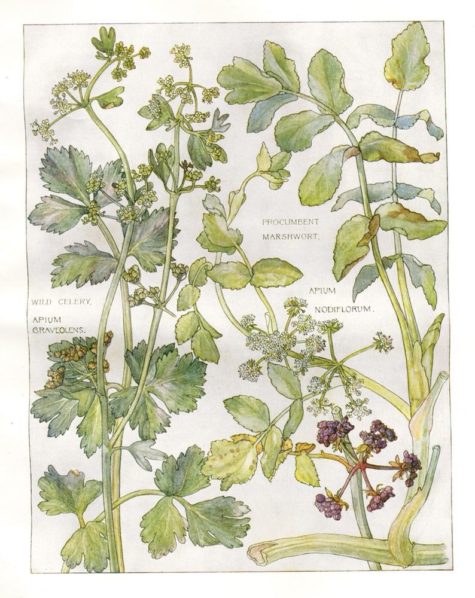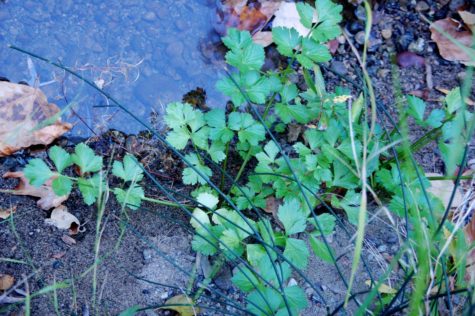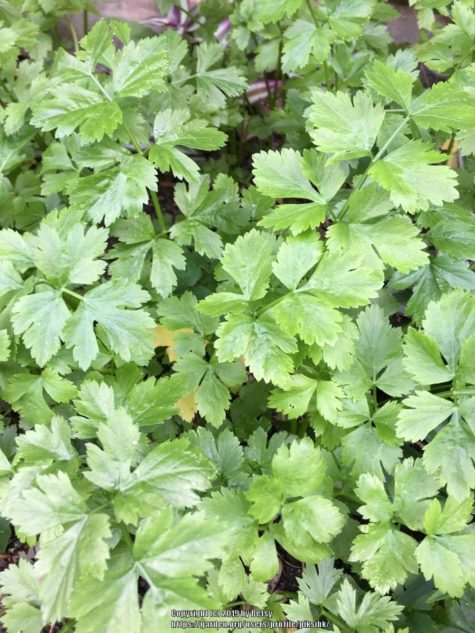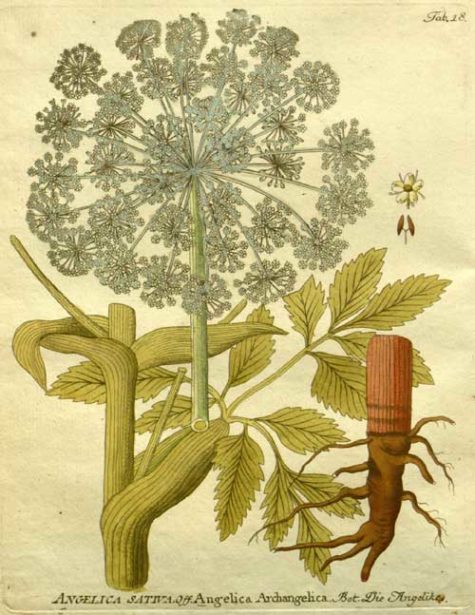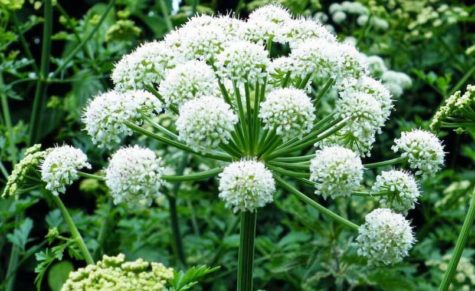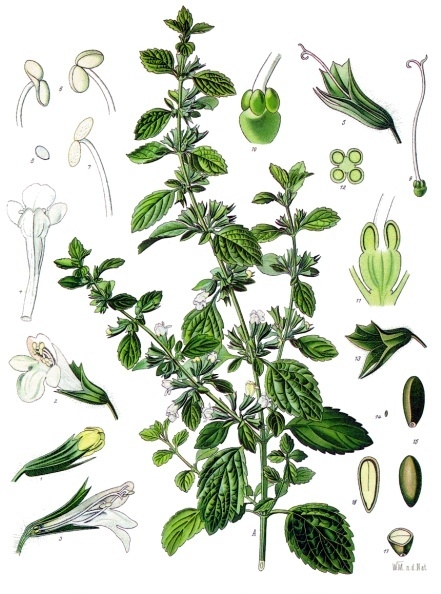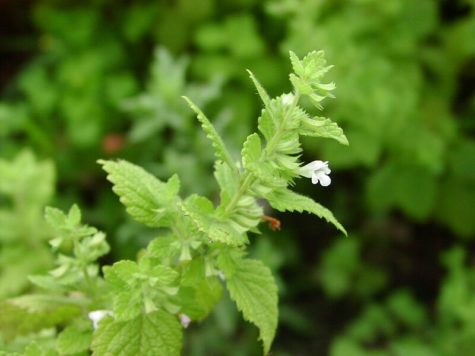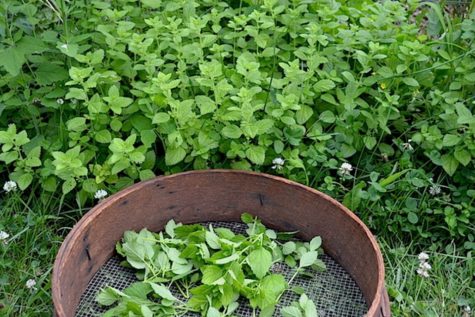Nervine
Wild Celery
- Scientific Name: Apium graveolens
- Plant Family: Umbelliferae
- Parts Used: Ripe seeds, Herb, Root
- Odor: Characteristic and agreeable.
- Taste: Aromatic, warm, and slightly pungent.
- Actions: Carminative, Stimulant, Diuretic, Tonic, Nervine.
See also: Celery
Wild Celery was used to crown the victors of the Greek Nimean games, held to honor Zeus. The pragmatic and epicurean Romans, meanwhile, exploited the herb’s culinary properties; the leaves, mixed with dates and pine kernels, made a standard stuffing for suckling pig during the empire.
In herbal medicine, Wild Celery is useful in hysteria, promoting restfulness and sleep, and diffusing through the system a mild sustaining influence.
Note:
Wild Celery is a common name for several plants. It can also refer to:
- Angelica (archangelica) cultivated as a vegetable and medicinal plant
- Lovage, (Levisticum officinale) sometimes known as wild Celery
- Radhuni or Ajmod (Trachyspermum roxburghianum) a plant used as a spice in South and Southeast Asia
- Water Celery or Eel grass (Vallisneria americana) an aquatic plant in the family Hydrocharitaceae
In this article, we are exploring the wild growing forms of Celery, Apium graveolens. This is the original and wild version of the commonly known cultivated kitchen and supermarket Celery. There is a bunch of information on the cultivated variety here: Celery.
Medicinal Uses:
Wild and cultivated Celery can be used interchangeably, see also this in-depth information on the cultivated variety of Celery.
Celery is good combined with Scutellaria for nervous cases with loss of tone. On this account it is recommended to eat the fresh root of the Cultivated variety, as well as taking the oil or fluid extract.
It is said to be very good for rheumatism, when it is often combined with Damiana.
- Dose: Fluid extract, 3 to 7 drops every four hours.
Prior to the 16th century, the Celery plant was used more as a medicine than a food. Celery seeds, leaves, stem, and root are used in a variety of traditional medicine systems, including the Unani tradition of ancient Persia and Arabia, Indian Ayurveda, and Chinese herbal medicine. As an herbal preparation, Celery seeds were consumed fresh or as a water decoction, or the seed powder or extracts were used. Continue reading
Angelica
- Scientific Name: Angelica archangelica
- Plant Family: Umbelliferae
- Parts Used: Root, seed, stems
- Actions: Alterative, Antimicrobial, Aromatic, Bitter, Carminative, Circulatory Stimulant, Diaphoretic, Diffusive, Emmenagogue, Expectorant, Grounding, Nervine
Notes: Angelica archangelica is not the same plant as Chinese Angelica (A. sinesis), often referred to as dong quai or dang gui. There are about 30 varieties of Angelica, but Angelica archangelica is the only one officially employed in medicine.
Cautions: Use care when wildcrafting, as it resembles both Queen Anne’s Lace (a benign wild carrot) and Water Hemlock (a poisonous plant).
The Basics:
Angelica is a stunning white flower that looks like a white starburst exploding across the green hillsides. One of Iceland’s most cherished herbs, it is not only beautiful, but also appreciated as a nutritious food, a liqueur and an herbal remedy. The roots and stems can be boiled or pickled and are considered a delicacy in all of Scandinavia. The stems were used to make a musical flute, as well as flavor reindeer milk or be crystallized in sugar for desserts.
Angelica is a veritable giant in the herb world. The towering plant is widely traveled and has a background rich in herbal lore. Use has been made of leaves, stems, roots, and seeds in cooking and in medicine.
Angelica is used for heartburn (dyspepsia), intestinal gas (flatulence), loss of appetite (anorexia), overnight urination (nocturia), arthritis, stroke, dementia, circulation problems, “runny nose” (respiratory catarrh), nervousness and anxiety, fever, plague, and trouble sleeping (insomnia).
According to WebMD, Angelica contains chemicals that might kill cancer cells and fungus, reduce anxiety, and settle the stomach.
Some women use Angelica to start their menstrual periods. Sometimes this is done in hopes of causing an abortion. Angelica is also used to increase urine production, improve sex drive, stimulate the production and secretion of phlegm, and kill germs.
Some people apply Angelica directly to the skin for nerve pain (neuralgia), joint pain (rheumatism), and skin disorders. In combination with other herbs, Angelica is also applied to the skin for treating premature ejaculation.
Angelica is also used as a smell in aromatherapy to reduce symptoms associated with quitting tobacco (nicotine withdrawal).
It should be noted that Angelica has a tendency to increase the sugar in the urine, so those with a tendency to diabetes should avoid it.
A strong volatile oil is present in all parts of the plant, but especially in the root, and Angelica is effective as a general tonic. Eating Angelica stalks is said to relieve flatulence and soothe “a feeble stomach.”
Drinking Angelica tea is said to promote urine and perspiration. It is also reputed to cause a strong dislike for alcohol and is sometimes used as a treatment for alcoholics.
Strain the tea to make a cool bath for tired eyes or a wash to cleanse the skin. The scented leaves are an ingredient in potpourri. Bees and wasps are attracted by the abundant nectar on Angelica flowers.
Continue reading
Lemon Balm
- Scientific Name: Melissa officinalis
- Plant Family: Laviatae
- Parts Used: Leaves – fresh or dried
- Actions: Carminative, Anti-spasmotic, Anti-depressive, Diaphoretic, Hypotensive, Anti-emetic, Hepatic, Nervine, Tonic
- Constituents: Rich in essential oil containing citral, citronellal, geraniol and lindol; bitter principles, flavones, resin.
- How does it work? Lemon balm contains chemicals that seem to have a sedative, calming effect. It might also reduce the growth of some viruses.
General Overview:
A member of the mint family, lemon balm is considered a “calming” herb. It has been used for centuries to help heal wounds, treat venomous insect bites and stings, induce relaxation and a sense of well being, improve appetite and aid digestion. Lemon balm, known and named for its fresh, lemony scent, has long been used as a culinary, cosmetic and medicinal and magical herb.
Note: Lemon Balm, though often called Bee Balm, should not be confused with another plant commonly called Bee Balm (Mondara dydima).
The botanical name, melissa, is Greek for “bee”. Lemon balm has been cultivated in the Mediterranean region for about 2000 years. The Muslim herbalist Avicenna recommended lemon balm “to make the heart merry”. Paracelsus claimed this herb could completely revitalize the body and called it the “elixir of life”, and 14th century French King Charles V drank its tea every day to keep his health.
Lemon balm is used for digestive problems, including upset stomach, bloating, intestinal gas (flatulence), vomiting, and colic; for pain, including menstrual cramps, headache and toothache; and for mental disorders, including hysteria and melancholia.
Lemon balm is excellent for treating anxiety and battling some hard-to-treat viruses. The list of symptoms from anxiety is vast but melissa tackles them all bravely. It is equally fearless when it comes to taking on viruses as daunting as Mono and Herpes. This is an herb every healer wants in the medicine cabinet.
In Ayruvedic medicine, Lemon Balm’s energy is pungent, sour-sweet, cool, and wet. Crushed leaves rubbed on the skin in the garden helps keep away bugs.
Many people believe lemon balm has calming effects so they take it for anxiety, sleep problems, and restlessness. Lemon balm is also used for Alzheimer’s disease, attention deficit-hyperactivity disorder (ADHD), an autoimmune disease involving the thyroid (Graves’ disease), swollen airways, rapid heartbeat due to nervousness, high blood pressure, sores, tumors, and insect bites.
Lemon balm is inhaled as aromatherapy for Alzheimer’s disease. Some people apply lemon balm to their skin to treat cold sores (herpes labialis).
Description:
A familiar garden plant with its fresh, green, nettle shaped leaves and strong bushy growth, lemon balm is native to southern Europe and was probably introduced to the north by the Romans. The creamy flowers are undistinguished and grow in loose clusters from midsummer. The hardy root is perennial.
Lemon balm has the square stems indicative of the mint family with green, oval, finely toothed leaves that grow opposite each other on the stem. The leaves also have fine hairs that capture morning dew and helps keep the plant moist. Flowers are small and yellow to white depending on soil type. It can vary in height between 12 inches to well over 3 feet.
Cultivation:
Easy to grow and tolerant of most soils, it does especially well on a fairly rich, moist ground in a sheltered, sunny position. Sow seeds in the spring or late summer; divide the roots in the fall or early spring; take cuttings in the summer. Keep the plants well weeded.
It prefers moist, not soggy, loamy soil in full sun but will develop more volatile oils when grown in drier, shadier soils. It can tolerate a vast pH range from 5 to 8 in the soil. Lemon balm flowers in the summer and provides an excellent source of nectar for bees and hummingbirds.
Barely cover seed to germinate in 1-2 weeks at room temperature. Set out at 12-15 inches apart in full sun and rich soil. This perennial plant typically gets 12-18 inches tall.
Like any mint, it can be aggressive–it spreads by runners, self-seeds, and can be propagated by cuttings. But it’s a plant, not a monster. I have my lemon balm in partial shade, next to my cabbages and some other aromatic herbs. It has formed some nice thick clumps in two years, but it is not taking over the garden by any means. If you feel concerned, plant it in a pot and sink the pot in the soil.
It is hardy to zone 4: -30°F. It is a good companion plant for members of the brassica family, and deer don’t usually eat it. For drying, harvest leaves just before or after it flowers. Don’t harvest when it’s wet or the leaves will discolor.
Collection
Leaves may be harvested two or three times a year between early summer and early fall. They are gathered by cutting off the young shoots when they are approximately 12 in long. Harvest them for drying as the flowers begin to open. Dry quickly and carefully in the dark, or in the shade, to preserve their color. They should be dried at a temperature not above 95° F.
Unlike other herbs which are at their best when the dew has dried off them in the morning, Lemon Balm should be harvested in mid to late afternoon when the oils are strongest.
Lemon balm can be harvested for fresh use once or twice a week and leaves can be kept in the fridge for a few days, or be frozen. Leaves should be handled delicately as they tend to bruise and turn black.
Hang sprigs to dry in dark cool place. Be sure to keep out of moisture, as leaves are prone to browning and more susceptible to mold. Store dried leaves in air tight container. The leaves lose some of their flavor when dried.
Medicinal Uses
Lemon balm is an excellent carminative herb that relieves spasms in the digestive tract and is used in flatulent dyspepsia. Because of its anti depressive properties, it is primarily indicated where there is dyspepsia associated with anxiety or depression, as the gently sedative oils relieve tension and stress reactions, thus acting to lighten depression.
A little patch of lemon balm in the garden, particularly near the bedroom windows, brings uplifting energy on dark days. We get a lot of cloudy days here in the Pacific Northwest. I’ve found that a bit of lemon balm growing in close proximity to my home brings just enough sunny energy to give my family the lift we need during long spans of dark weather. When the going gets particularly tough, we pick a few sprigs for our drinking water, but most of the time Lemon Balm’s presence is enough. Continue reading
Rennie Luttrull: queen-annes-lace-seeds
Rosanna: Spignel aka Bald Money
Annamarie Squatrito: Fumitory
EILEEN Klinghagen: Pumpkin
Mahmudul Hasan: Celery
